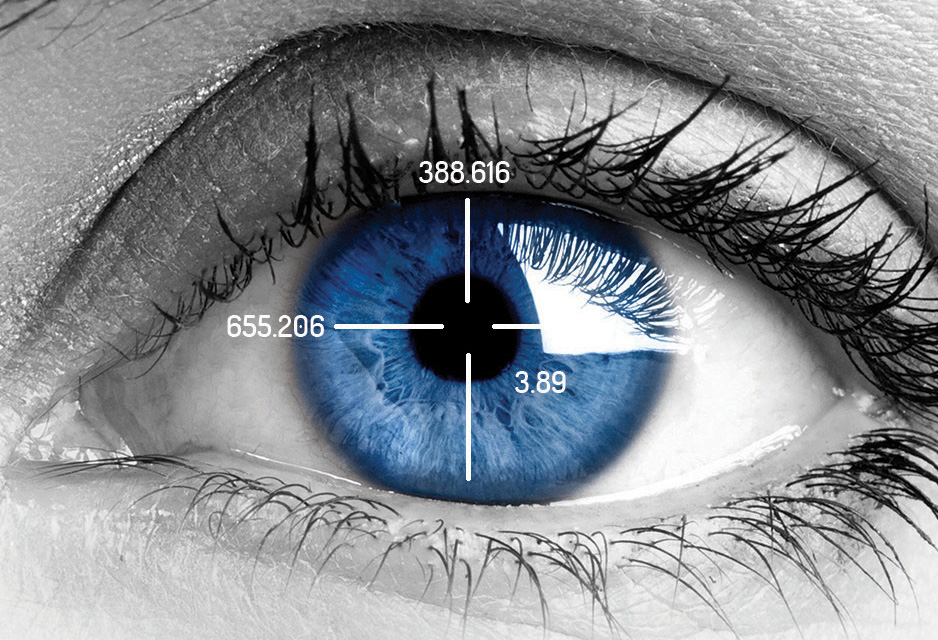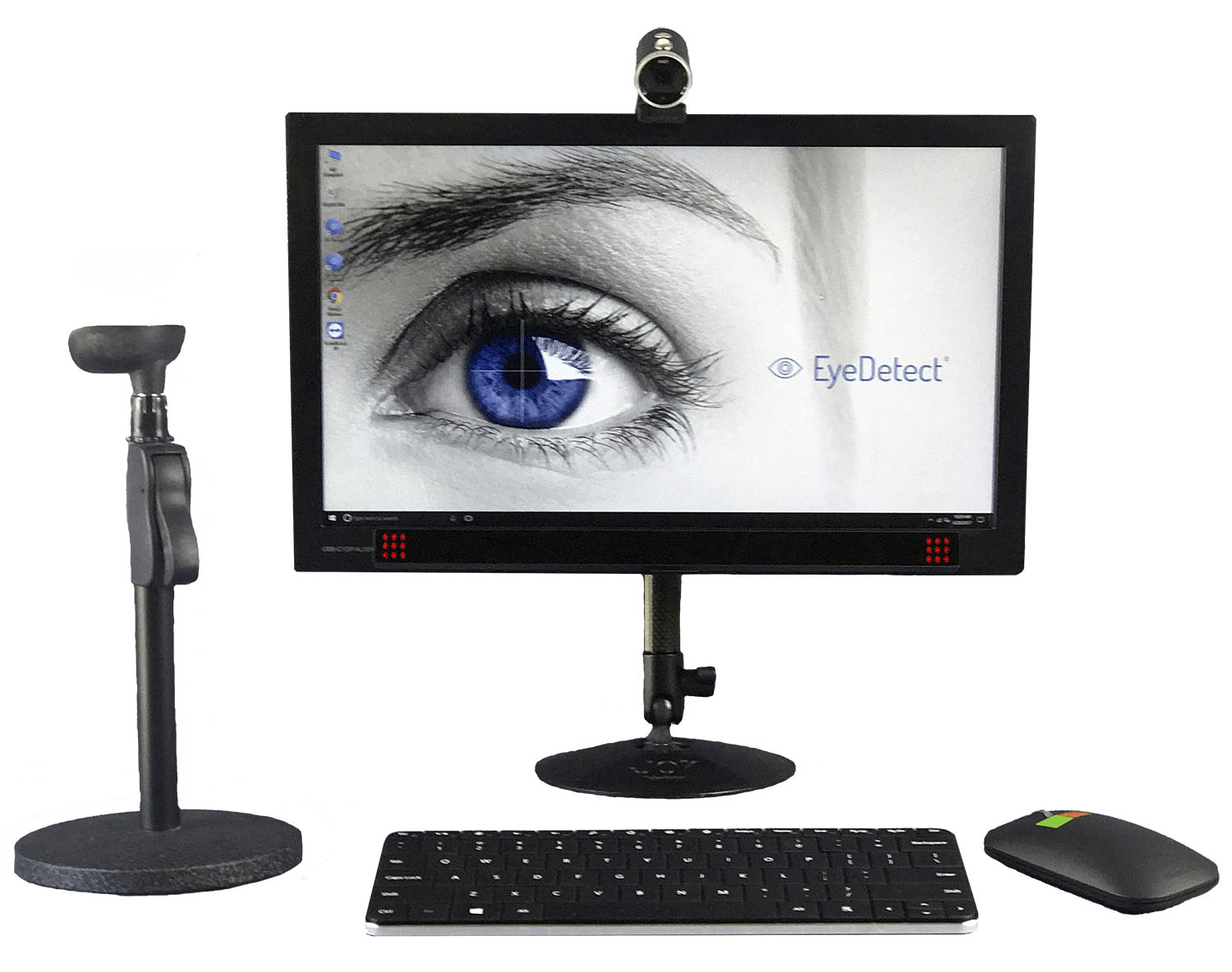Lie Detector Testing & Eye Detect for Investigators
Allowing investigators to conduct their own lie tests.


The Next-Generation Lie Detector is now available for Australian investigators to conduct their own testing in-house.
EyeValidatebased in Melbourne Australian is the premium service partner and reseller to Converus® based in Utah, USA. EyeValidate is headed by Australian polygraph examiner Steve van Aperen who has consulted his services to police departments, government agencies and intelligence agencies throughout Australia for the past 25 years. He is a former police detective of 14 years service having conducted polygraph testing for 81 homicide cases and serial killer investigations. He is a certified polygraph andEyeDetect examiner and trainer. As a former Victorian police officer he trained with the FBI, US Secret Service and LAPD. EyeValidate commenced in April, 2020 to provide government agencies and investigators the ability to directly conduct their own lie detector tests, credibility assessment and verification services. Recognising the need for, and the importance of, standardisation for accuracy he turned to EyeDetect which measures ocular motor reactivity. Amongst higher accuracy rates, objective and non-biased scoring together with more sophisticated data collection he partnered with Converus and created EyeValidate. For media interviews contact Steve directly on 0419313121

What is EyeDetect?
EyeDetect is the world’s first non-intrusive lie detection technology that accurately detects deception in 25-30 minutes by analysing eye behaviour. It can be used for screening or investigations.
The Industry
Credibility assessment (also known as lie detection).
EyeDetect’s Unique Characteristics
- EyeDetect is the first lie detector that monitors eye behaviour to detect deception.
- EyeDetect is the first breakthrough in effectively uncovering lies since the polygraph was invented nearly 100 years ago.
- When used in screening, scientific lab and field studies, as well as peer-reviewed journal articles, show EyeDetect has a mean accuracy of 86%. That’s comparable to the best polygraph.
- When used in investigations, an initial field study shows this test technique is 90% accurate.
- When used in conjunction with the polygraph, and when both tests have the same result, the “confidence outcome” is about 98%.
- Unlike polygraph, there are no cables or sensors attached to the examinee during an EyeDetect test.
- Because the test is automated, requires no examiner, and results are determined by an algorithm, EyeDetect is 100% unbiased.
- Polygraph exams, the long-time standard for lie detection, require a trained examiner, take at least 90 minutes to conduct, and reports can sometimes take hours to receive.
The 5 Steps of an EyeDetect Test
The person being tested sits in front of an EyeDetect Station, which is a computer with an eye-tracking camera mounted beneath the monitor. The eye tracker is calibrated to monitor involuntary eye behaviour.
The person answers a series of true/false questions for 15-30 minutes.
The question responses, along with pupil changes and other eye behaviour, are measured and stored on a secure, encrypted device.
At the conclusion of the test, the eye measurements and test responses are uploaded to a secure cloud server and analysed by proprietary algorithms.
A detailed report is generated within 5 minutes, and a Credibility Index Score indicates whether the person is credible or deceptive to the questions asked.
EyeDetect Facts
- Dallas Maverick’s Owner/Shark Tank star Mark Cuban is an investor in Converus.
- In May 2018, a U.S. District Court in New Mexico allowed EyeDetect test results as evidence in court for first time.
- EyeDetect is currently used by more than 500 customers in 40 countries in 40 different languages (including Arabic, Bahasa Indonesian, Burmese, Chinese, Croatian, Czech, Dari, English, French, German, Hebrew, Hindi, Korean, Lithuanian, Macedonian, Nepali, Pashto, Polish, Portuguese, Romanian, Russian, Slovenian, Spanish, Tagalog, Tamil, Turkish, Ukrainian Urdu and Vietnamese).
- EyeDetect customers are running tens of thousands of tests annually.
- There are approximately 105 Converus Service Partners in 37 countries.
- The eye-tracking camera mounted under the computer monitor takes approximately 60 measurements per second of involuntary eye behavior in each eye — including pupil dilation, blink rate and other eye movements — to detect deception.
- During the course of a 30-minute test, about 100,000 eye measurements are recorded of each eye.
- In March 2016, Midas, in Spain, became first well-known European brand to use EyeDetect to assure customers that its employees were trustworthy. The brand is now ranked #1 in their market (was #4).
- Converus Science Team members Dr. John Kircher, a widely recognized expert in government and industry on the subject of deception detection, and Dr. David Raskin — both internationally known and highly respected scientists in the polygraph community — invented the world’s first computerized polygraph system in 1991.
Lying, Corruption Facts
- “Lying is, in a pure physiological sense, an unnatural act.” – Lewis Thomas, American physician and biologist at Harvard Medical School, Pulitzer Prize nominee, and author.
- Studies reveal humans have an accuracy rate of about 54% for detecting a liar (about as good as a coin flip).
- Corruption costs 5% of global GDP.
- U.S. employees steal $50 billion annually from employers.
- In Russia, corruption consumes 44% of GDP.
- In the U.S., the Employee Polygraph Protection Act (EPPA) prohibits using lie detectors in private companies.
EyeDetect Customers
- Federal agencies in Guatemala (funded by U.S. Dept. of State), Mexico, Peru, Colombia, Panama, Singapore, Czech Republic, and an Arabic-speaking agency. (Due to confidentiality, names cannot be given.)
- Midas (Spain)
- U.S. customers include Boise Police Dept. (ID), Davis County Sheriff (Farmington, UT), Doña Ana County Sheriff (NM), Idaho State Police, Kane County Sheriff (Utah), Kent Police Dept. (WA), New Hampshire Dept. of Corrections, Palm Springs Police Dept. (CA), Utah County Sheriff’s Office
Story of EyeDetect’s Invention
- In 2002, Professor John Kircher, a widely recognized expert in government and industry on the subject of deception detection, and his colleague Doug Hacker, an educational psychologist with expertise in the psychology of reading, were driving to Seattle to climb Mt. Rainier. En route, they wondered if changes in eye movements and pupil size while reading and answering questions about a crime would reveal deception. Specifically, “Would changes in cognitive load affect the eye in such a way that we can capture those changes and be as accurate as the polygraph in predicting whether or not someone is being deceptive?” Thus the idea for an ocular-motor deception test (ODT) was born — later to be branded as EyeDetect.
- In 2003, Professors Kircher and Hacker formed a science team that included cognitive scientists Anne Cook and Dan Woltz. They began working together to produce and validate an ODT solution. (David Raskin joined the science team in 2009.) They continued to fine-tune the technology over the years, and after two formal scientific studies during this time, the technology was finally ready to be release to the marketplace in April 2014.
EyeDetect Timeline (Highlights)
2002 – Ocular-motor deception test (ODT) concept conceived.
2003 – Work began at the University of Utah to develop the ODT technology.
2013 – ODT technology branded as “EyeDetect.”
April 8, 2014 – EyeDetect technology announced at a press conference in Mexico City and released in Spanish Latin- America.
August 2015 – EyeDetect released to the U.S. market.
May 2018 – EyeDetect test results are allowed as evidence in a U.S. district court for the first time.
January 29, 2019 – EyeDetect test for investigations released
May 30, 2019 – EyeDetect Multi-issue Comparison Test (MCT) Protocol released. MCT scores up to four relevant issues in a single test and also accurately identifies the issue that caused the candidate to fail the test.
October 10, 2019 – EyeDetect for Investigations places first in the “Enterprise Software, Cloud and Big Data” category at the 17th Annual Utah Innovation Awards.
Testing can be conducted for:
- Bribes
- Counterfeiting
- Crimes
- Cyber crimes
- Documentation fraud
- Drug trafficking
- Drug use
- Fuel theft
- Identity theft
- Intelligence Screening (Government)
- Inappropriate benefits
- Money laundering
- Murder
- Robbery
- Stealing
- Terrorism
- Ties to criminals
- Unauthorized transactions
- Violent crimes
- Monitoring parolees, sex offenders
Top current 5 Credibility Assessment Tools (ranked by accuracy)
EyeDetect and fMRI (brain scan)
Polygraph
EEG (Electroencephalography – measures brain activity through electrodes attached to the subject’s scalp.)
Computer Voice Stress Analyser (CVSA)
Personality or Integrity Test